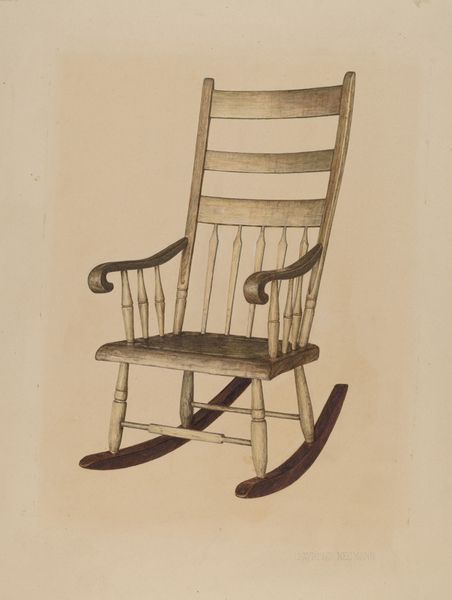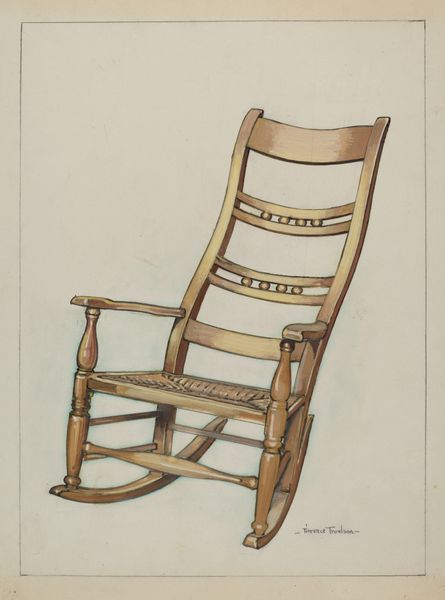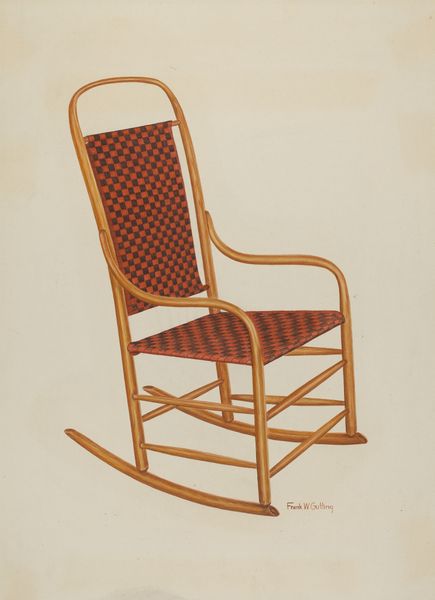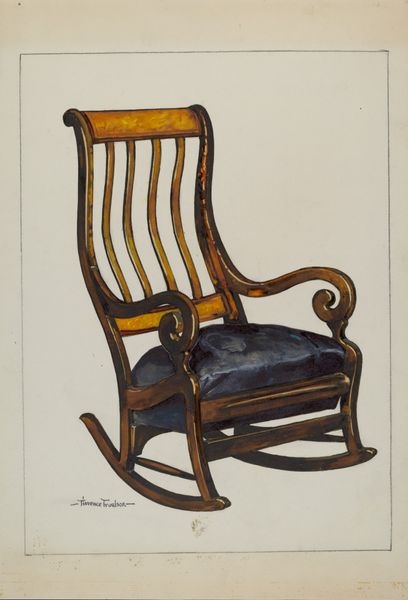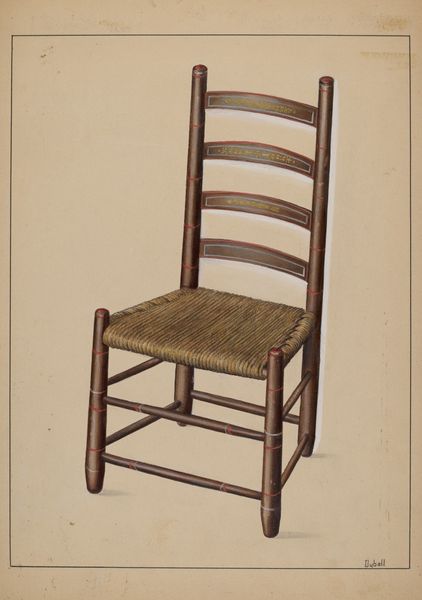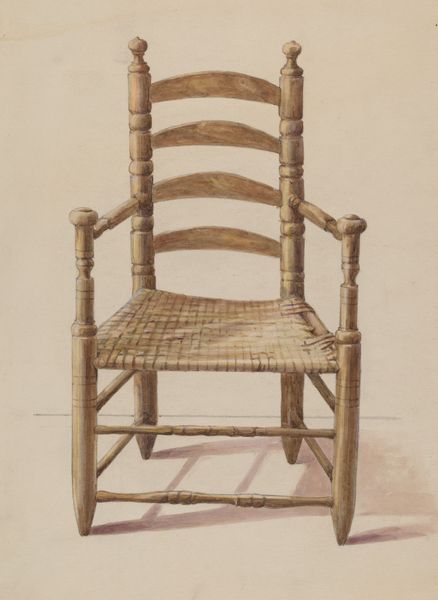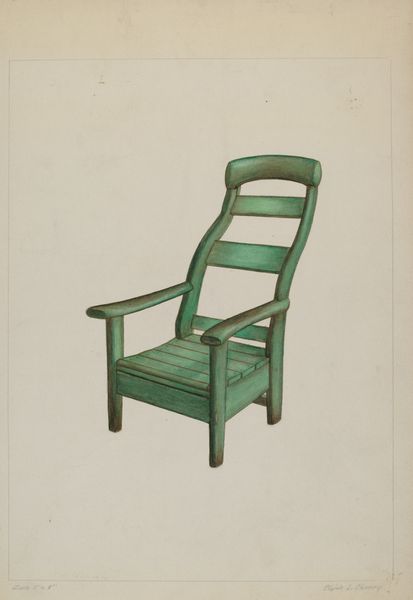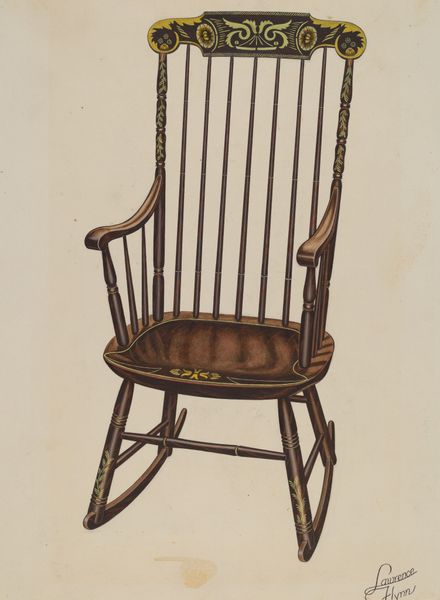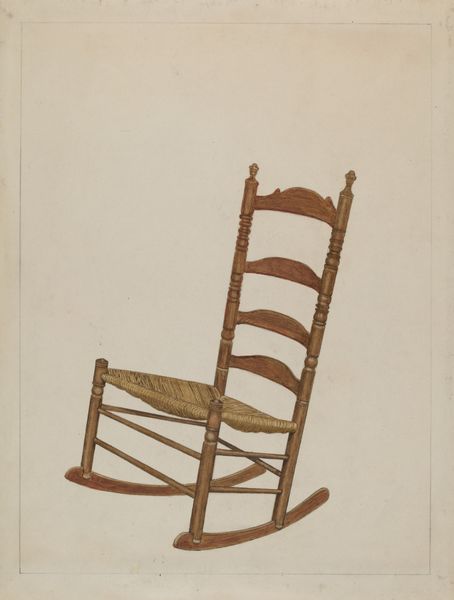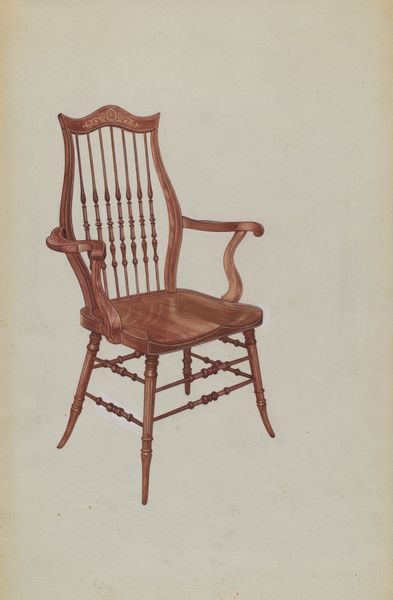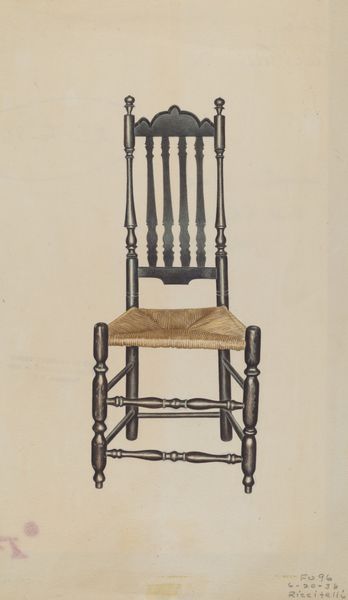
drawing, watercolor, pencil
#
drawing
#
watercolor
#
pencil drawing
#
pencil
#
watercolour illustration
#
watercolor
#
realism
Dimensions: overall: 36.2 x 28.1 cm (14 1/4 x 11 1/16 in.) Original IAD Object: 40"high; 24"wide
Copyright: National Gallery of Art: CC0 1.0
Curator: Here we have J. Howard Iams's "Ladder Back Rocking Chair," a watercolor and pencil drawing executed in 1936. What's your initial take on it? Editor: Serenity. Plain and simple. The soft, pale tones suggest quiet afternoons, maybe with a glass of lemonade and a gentle breeze. It’s domestic tranquility visualized. Curator: The rendering, executed in watercolor and pencil, presents an interesting interplay between the organic and the constructed. Notice how Iams uses light and shadow to emphasize the chair’s form, creating depth on a rather flat plane. Editor: Absolutely. The woven seat gives it great texture, especially when juxtaposed against the smoother lines of the ladder back. It reminds me of the rocking chair my grandmother had on her porch, minus the creaks. But what exactly drove Iams to depict…a rocking chair? Curator: While the context of Iams’s practice is not readily available, it’s fascinating to analyze the visual components. Observe the deliberate asymmetry in the placement of the rocking chair against the paper, disrupting an easy balance and bringing attention to formal arrangement. Editor: I'm also captivated by the colour palette - the gentle blend of light browns. Did Iams choose watercolor to specifically enhance these muted tones? Curator: It would seem so. Watercolor allows for delicate layers, emphasizing texture. Furthermore, notice how the lines—primarily pencil—add a foundational structure beneath the washes, unifying the varied textures. It shows artistic rigor and intentionality, and avoids a simple reproduction. Editor: So, more than just an image of furniture; a careful, deliberate statement? Almost an ode to comfort through the geometry of form. It's less about the rocking and more about the chairness, if that makes sense. Curator: Precisely. And this close visual examination gives access to the artistic statement itself. The lack of human presence enhances its universality; an idealized form. Editor: Thinking about the details adds so much richness! I initially saw a simple piece; but now, there's a great sense of artistic composition in play. Curator: Indeed. By dissecting these components, we can begin to decipher the artistic intentions embedded in what appears at first to be mere functional representation.
Comments
No comments
Be the first to comment and join the conversation on the ultimate creative platform.
